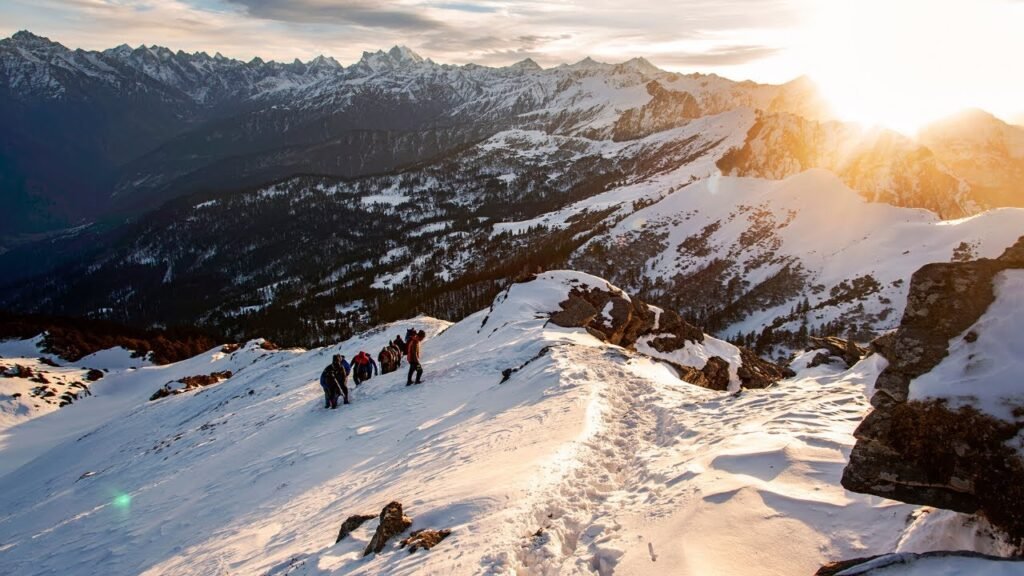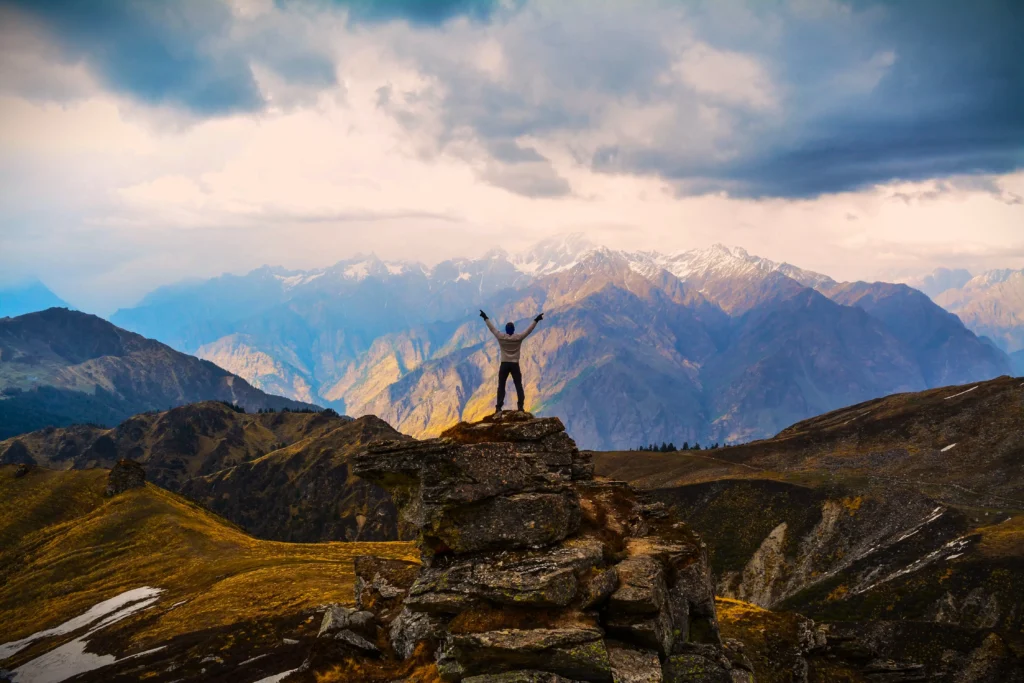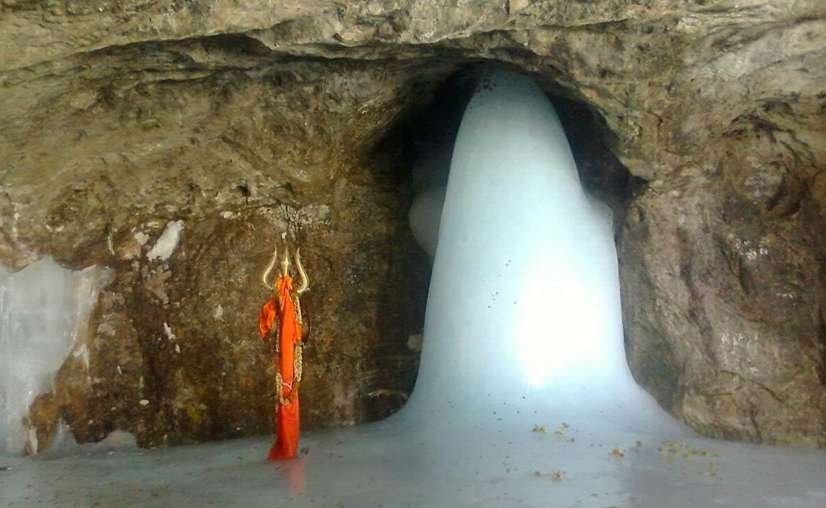
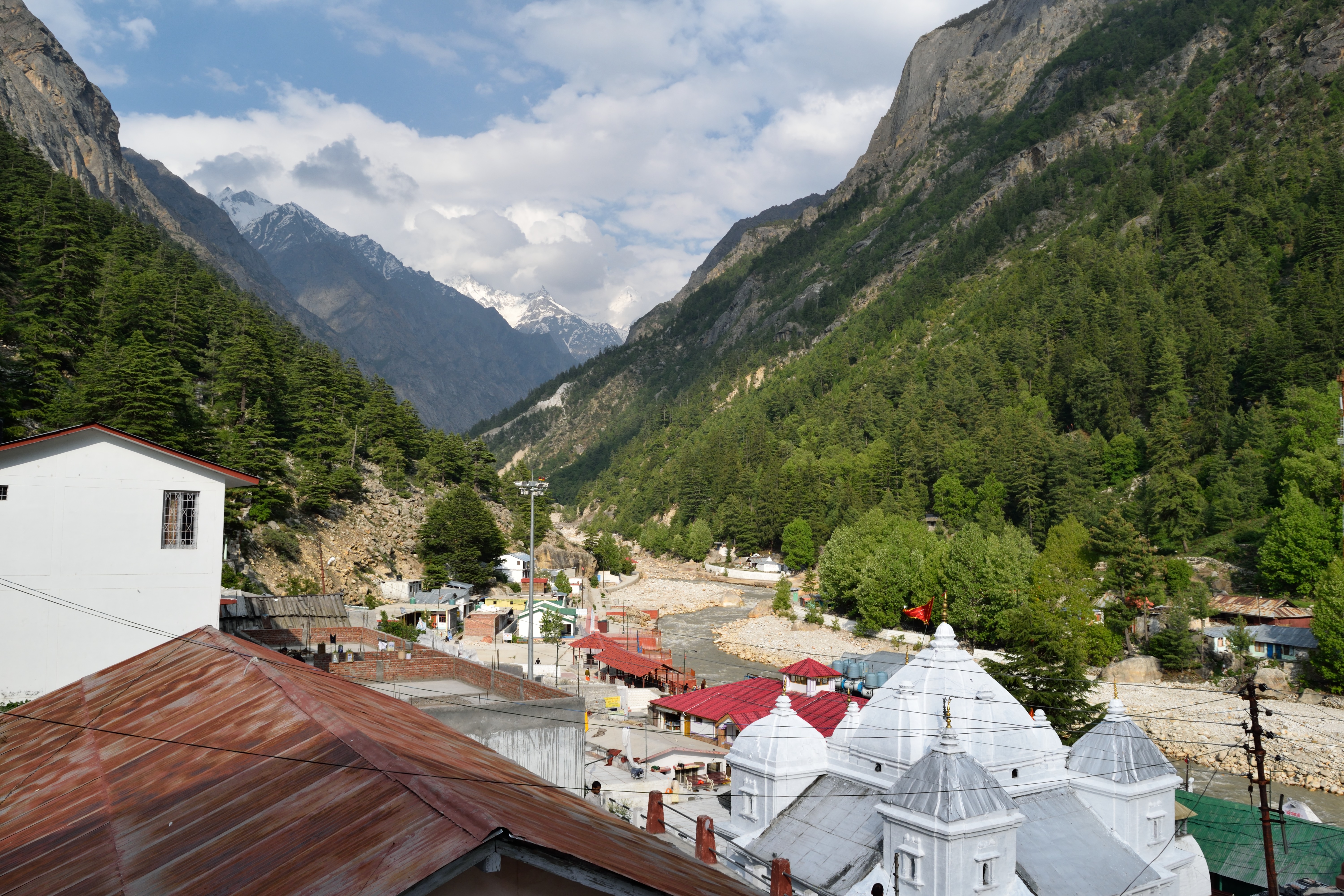
1. Call from Ma Ganga
Rivers don’t just flow, they remember. And among all rivers, Ma Ganga has always felt like someone I’ve known forever. I don’t even know when it started — maybe while watching her drift by in Rishikesh as a kid, or maybe from my mother’s stories about her holiness.
A few months ago, sitting quietly near the ghat in Haridwar, I don’t know what got into me. Maybe the evening aarti, maybe the way the lamps floated away with the current — but something stirred deep inside. It wasn’t wanderlust, it wasn’t adventure. It was more like a whisper — “Come find me.”
I didn’t plan it much. One day I just told my parents, “I’m going to Gangotri.” My mother looked up from the kitchen and said softly, “Go with faith. Ganga maiya will take care of you.”
That night I packed light — a backpack, a woollen cap, a notebook, and a copper lota I had bought from Haridwar. I didn’t even check hotel options. Somewhere inside, I believed if the river could flow all the way from heaven to earth, she’d somehow show me the way too.
2. The Journey Begins – Roads of Faith and River Songs
The bus from Rishikesh to Gangotri started at dawn. The sky was still sleepy when I climbed in. There were mostly pilgrims — families, sadhus, old couples, a few solo travelers like me. The driver had a small Ganesha idol on his dashboard and an old Hanuman Chalisa cassette playing.
The road started winding up almost immediately. The Ganga, still calm and green, followed us faithfully on one side. Sometimes she disappeared behind the hills, only to return with a louder, wilder voice. Every few kilometers, the driver honked at sharp turns while shouting, “Bolo Ganga Maiya ki Jai!” — and everyone in the bus replied like one body.
We stopped at Devprayag for breakfast — where the Bhagirathi and Alaknanda meet. I’d seen pictures before, but no photo does justice to that color contrast — one stream emerald, the other turquoise, both merging in a swirl of white foam. I stood there quietly for a while. It looked like a conversation between two old souls.
The chai there was sweet, a bit smoky. I spilled a few drops on my hand because I wasn’t paying attention — the river below just had my eyes glued. A local man sitting next to me smiled and said, “Ganga sab dhool dho deti hai, beta. Don’t worry.”
Further ahead, Uttarkashi welcomed us. It’s a small, lively town — people selling sweaters, wool socks, dried fruits, and Rudraksha malas. I bought one without bargaining. Something about the place made me feel that haggling here was almost disrespectful.
By the time we crossed Harsil Valley, it started to drizzle lightly. Mist hung around pine trees, and the Bhagirathi flowed like a silver ribbon below. It was quiet except for the soft hum of rain. I remember thinking — “This is how peace must sound.”

3. At Gangotri
I reached at Gangotri in evening.
I dropped my bag in a small lodge run by a sweet old couple. The aunty there offered me ginger tea before I even asked. She said, “First, warm yourself. Ganga maiya doesn’t like her children shivering.”
After resting a bit, I walked barefoot to the temple.
Inside, the idol of Ma Ganga gleamed softly in the lamp light. I don’t know what happened — my throat tightened, my eyes filled up and i didn’t ask for anything and just said a quiet “Thank you.”
The priest smiled knowingly, as if he had seen thousands like me — city-worn souls, broken in ways they couldn’t explain, finally breathing again by her side.

4. The Surroundings – Echoes of Divinity
The next morning, I went to explore the surroundings. The air fresh enough to make me forget my aching legs.
First, I went to Bhagirath Shila, the rock where King Bhagirath is said to have meditated for years to bring Ganga to earth. I placed my hand on the stone. It was cold, slightly wet, but strangely warm in energy. I don’t know if that makes sense, but it felt alive.
A few pilgrims were sitting quietly nearby, eyes closed. I sat down too, without really knowing why. The river’s sound became background music to my breath. For a few minutes, I forgot everything — my phone, my plans, even myself.
Later, I walked towards Pandava Gufa. It’s a small cave said to have sheltered the Pandavas on their way to heaven. The entrance was narrow, and inside it smelled of incense and damp earth. A sadhu sat near a tiny lamp, humming softly. I asked him if he lived there. He smiled and said, “I don’t live here, I live with her.” It took me a moment to realize he meant the river.
I also went to Surya Kund and Gauri Kund — both small pools glowing in sunlight, surrounded by icy rocks. A few pilgrims were offering flowers. I just sat on the edge, dipped my hands in, and felt my fingertips go numb.
That water — it’s not just cold, it’s pure in a way that feels ancient.
That evening, I sat by the riverbank, watching the current move endlessly. A young monk beside me said something I’ll never forget:
“We don’t come here to wash our sins. We come here to remember we are already pure.”
I didn’t respond. I just smiled. Because somehow, I knew what he meant.
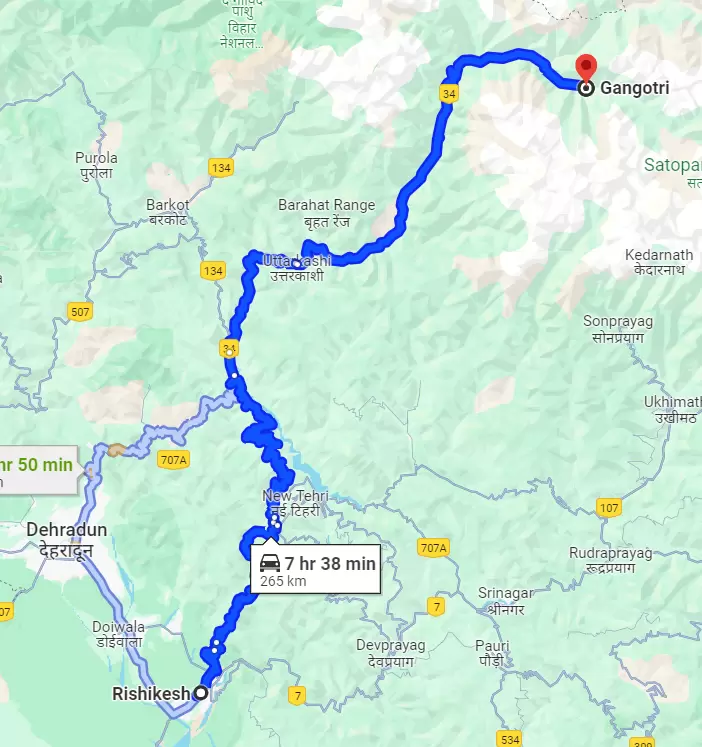
5. The Journey to Gaumukh – The Source of the Ganga
Two days later, I decided to go further — Gaumukh, the glacier where the Ganga begins.
The trek is about 18 kilometers, and I won’t lie, it’s tough. The first few kilometers were fine, but after Bhojbasa, the air thins out fast. I was panting, my legs felt heavy, and I cursed my city lifestyle more than once. But each time I looked up, the view made every breath worth it — snow peaks rising like temples, the sound of wind echoing through valleys.
Somewhere near Bhojbasa, I met a group of sadhus walking barefoot. One of them, probably in his 70s, looked at me struggling and said, laughing, “You think you walk to Ma Ganga, but it’s she who decides who gets to see her home.” Those words stayed with me the rest of the way.
When I finally reached Gaumukh, I didn’t expect what I saw. No grand temple, no big crowd. Just a massive wall of ice, melting quietly. From its mouth — shaped like a cow’s face — clear water gushed out. The first drop of the Ganga. The beginning of everything. I knelt and touched it. My hands froze instantly, but I didn’t care. Tears rolled down before I could stop them. I filled my copper lota, whispered a prayer for everyone I loved, and just… sat there. It’s hard to describe that moment. It wasn’t joy, it wasn’t sadness. It was peace — the kind that feels earned.


6. Evenings at Gangotri
When the River Glows with Prayer Back in Gangotri that evening, I attended the Ganga Aarti. If heaven had sound, it would be this. The priests lifted large brass lamps, their flames circling gracefully. The chants rose and fell with the rhythm of the river. The orange glow of the diyas reflected in the rushing water, and for a moment it felt like the Ganga herself was shimmering with joy. I had a small diya in my hand. I whispered a quiet thank you and let it go into the current. It wobbled a bit, then found its rhythm and floated away. I watched it until it disappeared. It reminded me of how life works — you just have to trust the current and let go. People around me were singing, laughing, crying — strangers, yet connected by something invisible. I’ve never felt that kind of collective peace anywhere else. No phones, no hurry, just hearts glowing like those lamps.
7. The Return
Carrying the River Within Leaving Gangotri was hard. I didn’t want to. I kept finding excuses — “Maybe I’ll stay one more day,” “Maybe I’ll visit that small temple again.” But eventually, I packed up. The old aunty from the lodge gave me a bottle of Ganga jal wrapped in cloth. “Keep her close,” she said. I promised I would. As the jeep drove down the same winding roads, everything looked familiar yet completely different. The mountains didn’t seem so intimidating now. They felt like old friends waving goodbye. I realized something — I had come looking for peace, for purity, maybe even for forgiveness. But what I found was simpler. Flow. The ability to move forward, gently, no matter what. Every river stone, every chant, every smile from a stranger had carved something new inside me.

8. What Ganga Teaches Us
It’s been weeks since I returned, but sometimes when I wash my hands or hear rain, I’m back there — standing by the Bhagirathi, shivering, crying, alive. The Ganga isn’t just a river. She’s moves, forgives and reminds that we can begin again, and again, and again. I don’t remember every sight or sound perfectly. But I remember the feeling — that soft, humbling reminder that something far bigger, far kinder, still flows through this world. Maybe that’s what faith really is — not about knowing, but feeling. Har Har Gange. 🌊 🌿 Travel Notes Best time to visit: May to October (avoid monsoon) Route: Haridwar → Rishikesh → Uttarkashi → Harsil → Gangotri Altitude: 10,200 ft approx. Essentials: Warm clothes, wool socks, a thermos, power bank, and lots of patience. Tip: Don’t rush. Let the mountains set your pace.
If you loved abou this you might also like Badrinath Yatra


